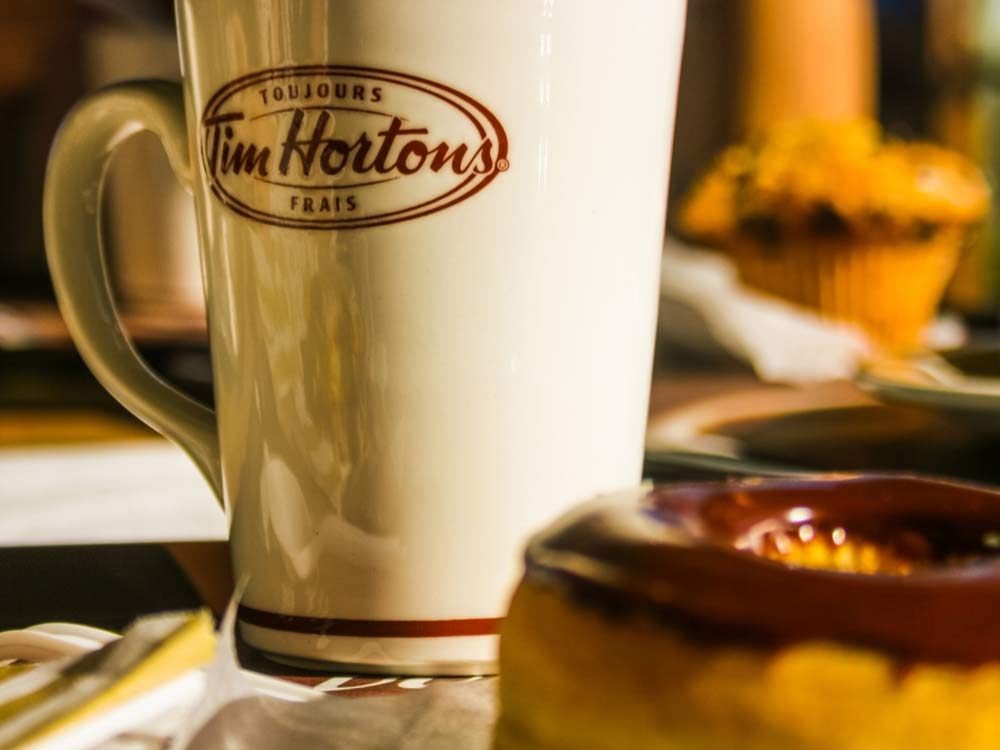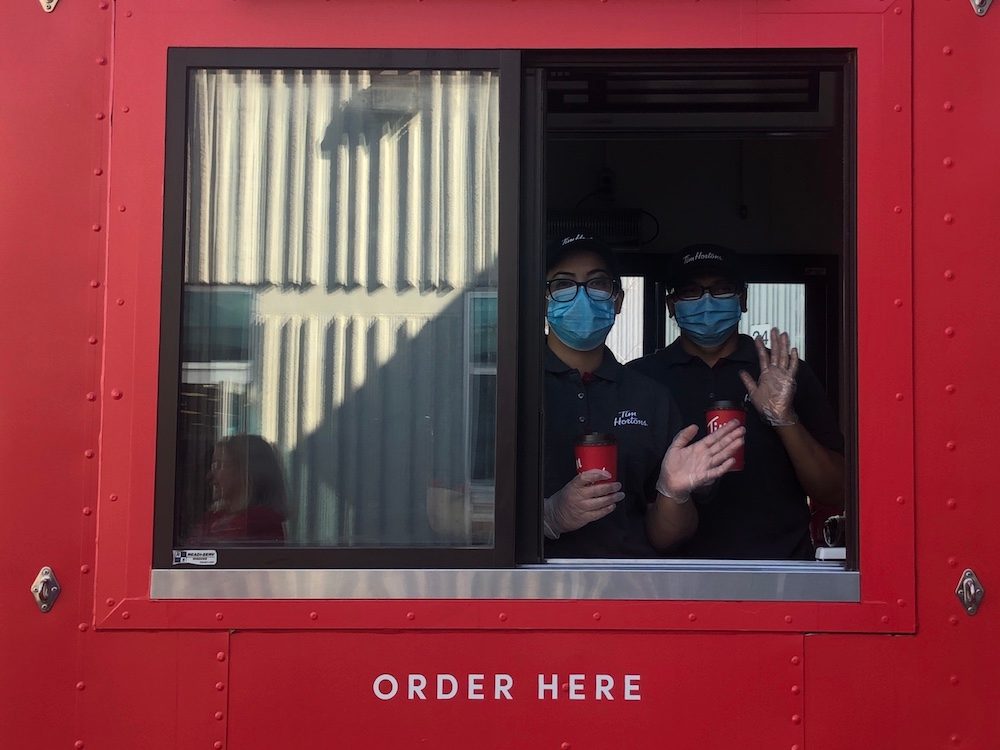6 Ways That a Visit to Tim Hortons Has Changed
Canada’s iconic coffee brand has had to make some major changes for the pandemic.

Like most businesses this past March, Tim Hortons had to quickly adapt its business. As cases rose and governments issued stay at home orders, Timmies all over the country rapidly shut down their dine-in service, and shifted to drive-through and take-out customers.
Tim Hortons has always been more than a place to grab a quick coffee and donut—it was also a gathering place for communities. “We have folks that gather at our restaurants every day as part of their normal routine, to meet with their family or their friends,” says Tanya Doucette, a restaurant owner in central Alberta and spokesperson for Tim Hortons. “[Before reopening], we had all kinds of folks bringing their lawn chairs from home, and they’d sit in our parking lot or on our lawn and be socially distant from their friends and with their coffees.”
Here are six ways that a visit to your local Tims has changed.
No reusable cups
Before the pandemic, Tim Hortons routinely allowed customers to bring in their own mugs for coffee and tea. In fact, this year’s Roll Up The Rim promotion rewarded reusable cup users with extra entries before the coffee chain suspended the use of reusable cups in stores.
“We suspended our reusable cup service as a temporary measure while we work through this period,” Doucette says “We made that choice as the COVID situation was unrolling around the world.”
Restricted dine-in areas
In parts of Canada where indoor dining is permitted, dine-in areas in Tim Hortons now have fewer tables to limit the number of people there at once. “We have removed tables to create more space around the ones that are left,” explains Doucette. “Guests can come in and they can sit confidently sit with a small group.”

Physical distancing enforced
Customers at Tim Hortons will need to keep the mandatory six feet (or, according to the company, 46 Timbits) between each other while they’re in line and waiting for their orders. “There’s also enough space around [the tables], they have the distance between the pathways where people would walk through the restaurant and also those seated at other tables,” says Doucette.
Heightened sanitation measures
“In the restaurant business, you wash your hands obsessively anyway, but during COVID-19, it’s like every 10 minutes we’re washing our hands,” says Doucette. “There’s a real consciousness around the need to focus on those core procedures.”
Along with extra hand-washing, Tim Hortons has upped their cleanliness game and has focused on extra sanitization of high-touch surfaces like counters, doors, self-serve screens and credit card machines.
Curbside pick-up
At some Tim Hortons locations, curbside pick-up is available for customers who don’t want to go into the restaurant. Customers need to download the Tim Hortons app, place an order and select the curbside pick-up option.
Coffee trucks
In the past, special Tim’s trucks could be found at events like the Calgary Stampede or the Canadian National Exhibition. Now they’re appearing near essential workplaces like hospitals to serve Canadians working on the frontlines of the pandemic. “They’re vans that are dressed up like a Tims,” explains Doucette. “Then inside, it’s like a little mini functioning Tim Horton that serves coffee, tea, iced capps and lemonade.”






